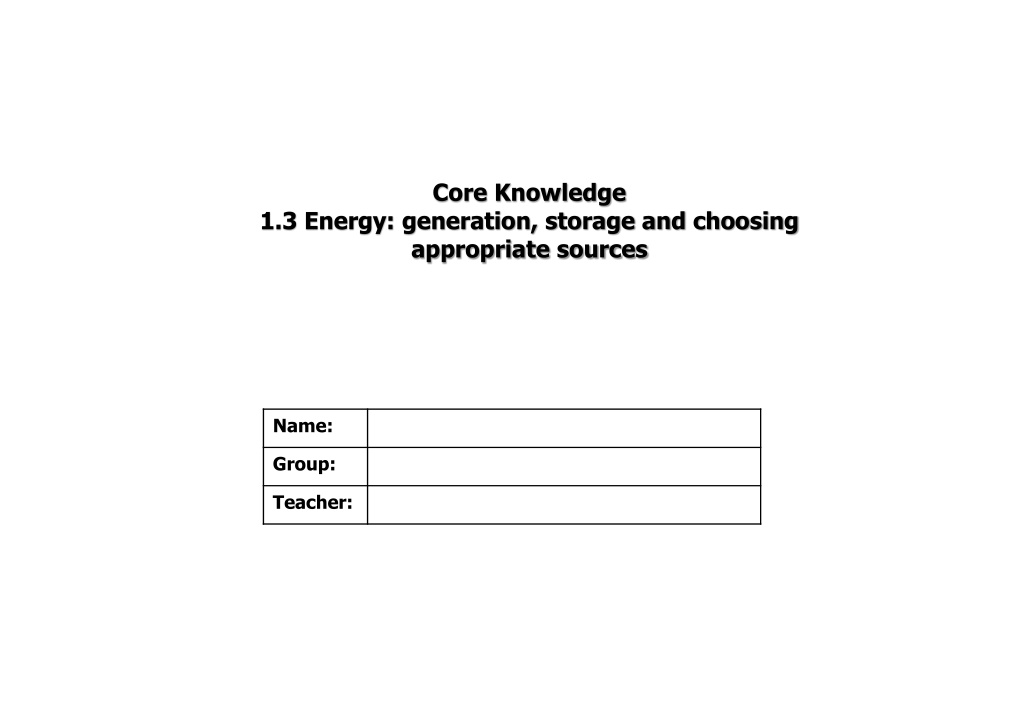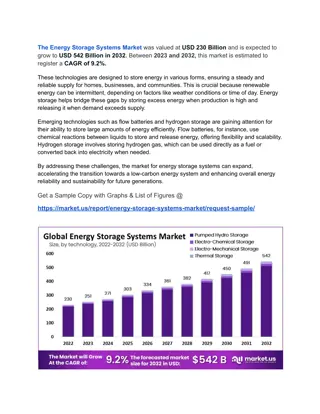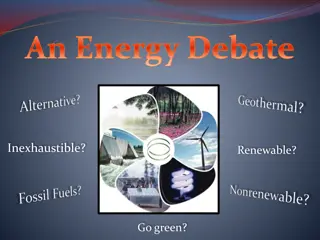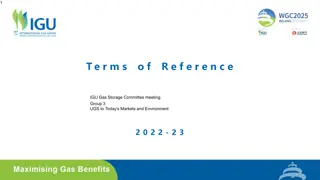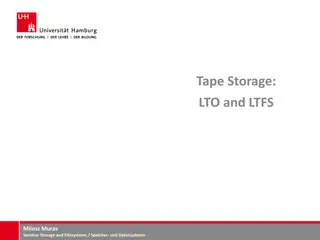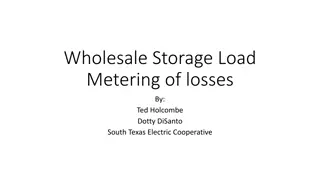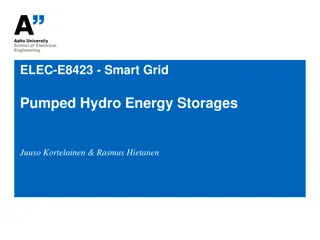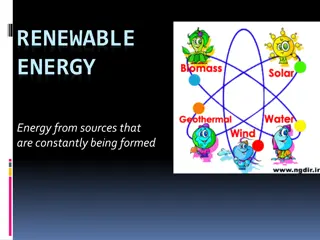Understanding Energy: Sources, Generation, and Storage
Explore the fundamentals of energy sources, conversion methods, advantages, and disadvantages of non-renewable and renewable sources. Delve into topics such as coal, oil, gas, biomass, solar, wind, and more. Understand the National Grid, power systems, and considerations when selecting energy sources based on factors like portability, environmental impact, power output, connections, and cost.
Uploaded on Sep 28, 2024 | 0 Views
Download Presentation

Please find below an Image/Link to download the presentation.
The content on the website is provided AS IS for your information and personal use only. It may not be sold, licensed, or shared on other websites without obtaining consent from the author. Download presentation by click this link. If you encounter any issues during the download, it is possible that the publisher has removed the file from their server.
E N D
Presentation Transcript
Core Knowledge 1.3 Energy: generation, storage and choosing appropriate sources Name: Group: Teacher:
1.3 Energy: sources, generation and storage Complete the tasks below based on non-renewable energy sources Explain what a non-renewable energy source is, and how they are formed: Pages 15-18 Source How it is converted into energy Advantages Disadvantages Coal Oil Gas Explain two reasons why coal is classified as a non-renewable energy source: Name:______________________ Year 10 Core Knowledge
1.3 Energy: sources, generation and storage Complete the tasks below based on renewable energy sources Renewable energy sources use natural energy to make electrical energy. How much energy do renewable sources produce in the UK? Key term: Photovoltaics: using solar cells to generate electrical power by converting energy from the sun Pages 15-18 Why is the use of renewable energy sources important? Source How it is converted into energy Advantages Disadvantages Biomass Biodiesel Tidal Name:______________________ Year 10 Core Knowledge
1.3 Energy: sources, generation and storage Complete the tasks below based on renewable energy sources Pages 15-18 Source How it is converted into energy Advantages Disadvantages Wind Solar Hydroelectric Storage of energy What is the National Grid? Why do power companies need to store electricity? Name:______________________ Year 10 Core Knowledge
1.3 Energy: sources, generation and storage Complete the tasks below based on power systems Pages 15-18 Batteries and Cells Solar Cells Mains Electricity Wind Power Example 1: cylindrical cell Examples: Example: solar panels Example 2: prismatic cell Power Systems Write a definition for a power system: Example: low voltage cells Give 4 examples of a power supply: i) ii) iii) iv) Name:______________________ Year 10 Core Knowledge
1.3 Energy: choosing appropriate energy sources Complete the tasks below based on selecting and using power sources Pages 15-18 Give one reason why solar cells are more environmentally friendly than rechargeable cells: When choosing the appropriate power source to use, there are a number of factors that designers need to consider. In the space below, bullet point relevant information relating to: Portability of the power source: Environmental impact: Power output: Circuit/system connections; Cost: Consider two factors that determine the most appropriate energy source for a bedroom desk lamp: Name:____________________ Year 10 Core Knowledge
